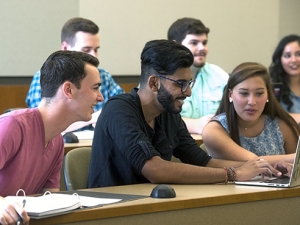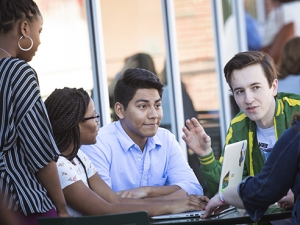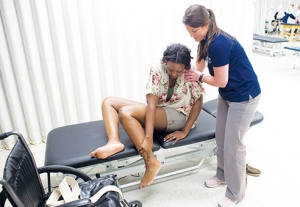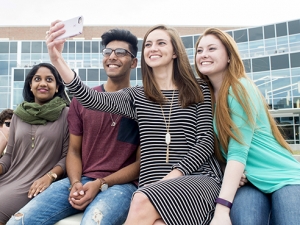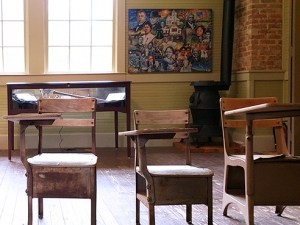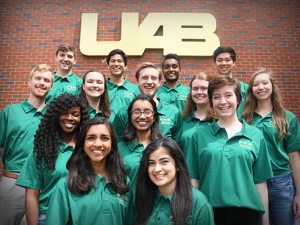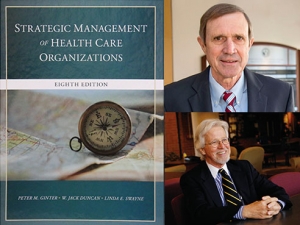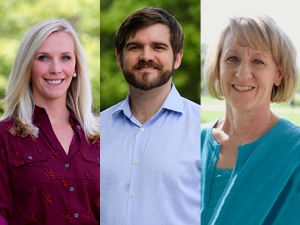 Students in STP 2233 practice ultrasound examinations.
Students in STP 2233 practice ultrasound examinations.
Ultrasonography is an incredibly useful tool in medicine, particularly in emergency departments. It can be used to assess, usually in under a minute, whether a critically injured patient has time for a CT scan or needs to be rushed directly to the operating room. As the technology advances, it gets cheaper, more portable and more powerful, and because it uses sound waves, its use doesn’t put the patient at risk for radiation.
Despite its usefulness, ultrasound education for medical students often is limited. Fewer than half of U.S. medical schools give students the option to perform hands-on ultrasound examinations. Significantly fewer have it fully integrated into the required curriculum or offer pre-clinical ultrasound electives, said David Resuehr, Ph.D., assistant professor in the Department of Cell, Development and Integrative Biology.
Resuehr teamed with colleagues from across UAB to developed high-quality ultrasound instruction programming for interested students to ensure UAB provides the highest quality instruction to its medical students. He developed a week-long special topics course, STP 2233 Introduction to Ultrasound in Anatomy, in which about a dozen second-year medical students learn the basics of ultrasound technology and technique, beginning with the physics behind it and culminating in the identification of pathological processes.
“Understanding how complex three-dimensional anatomical structures translate to greyscale ultrasound images is very helpful for students to gain a deeper understanding of the anatomy and physiology they’re studying,” Resuehr said.
|
“We are all working toward one common goal: giving students the best medical education.” |
Interprofessional partnerships
Resuehr developed STP 2233 three years ago with faculty and staff from the Department of Emergency Medicine and the Office of Interprofessional Simulation for Innovative Clinical Practice (OIPS). The course provides a unique opportunity to learn foundational knowledge about emergency medicine ultrasounds and allows them hands-on practice with high-fidelity ultrasound simulators and standardized patients. They also shadow physicians in the emergency department.
“Scanning live emergency department patients with active pathophysiology is vital for their understanding of how a two-dimensional grey image can help them understand what is happening with the patient in front of them — and help them make better decisions regarding that patient’s care in real time,” said Luke Burleson, M.D., an emergency medicine resident who co-directs STP 2233 with Resuehr.
Each August, medical students have the chance to better their understanding of ultrasound technology and experience its value as an educational and clinical tool.
 David Resuehr, Ph.D., and Marjorie White, M.D.“We are all working toward one common goal: giving students the best medical education,” Resuehr said. “We want to give students a solid foundation on how to effectively provide and interpret ultrasound scans so they can to provide better patient care as future physicians.”
David Resuehr, Ph.D., and Marjorie White, M.D.“We are all working toward one common goal: giving students the best medical education,” Resuehr said. “We want to give students a solid foundation on how to effectively provide and interpret ultrasound scans so they can to provide better patient care as future physicians.”
A step ahead
Although ultrasound technology gradually is getting cheaper, machines still are relatively expensive, Resuehr said; finding time and funding for training programs are barriers to incorporating ultrasound education into the medical school curriculum.
At UAB, Resuehr partnered with OIPS, which has purchased ultrasound machines for student practice, for high-fidelity ultrasound simulations. OIPS also trains practicing clinicians interested in learning to use ultrasound technology. In exchange for use of the OIPS machines and space to train students, Resuehr has helped them develop training materials for practicing clinicians, said OIPS Director Marjorie Lee White, M.D.
“Ultrasounds are an incredibly important part of patient care,” Dr. White said. “We serve as a host site for ultrasound training and partner with experts like Dr. Resuehr to make sure all our learners across the spectrum — everyone from medical and physician’s assistant students, to residents, nurse practitioners, and other health care practitioners — have ultrasound skills.”
|
“Many clinicians don’t know how to do ultrasounds, but … everyone realizes the value of it, especially once they’ve gotten their hands on it themselves.” |
Adoption of the simulation model to train students and clinicians has given UAB an advantage in the field of ultrasound education because it enables the learners to benefit from interprofessional partnerships across relevant fields and access technology that is specific for their use.
Students benefit because they train with the right people and technology, White said.
Sharing knowledge
UAB students trained in ultrasound technology will have a head start when they begin practicing, Resuehr said. He started STP 2233 three years ago to create a curriculum-based place to get that instruction. He also hosts independent sessions for interested students in the OIPS.
“Not every specialty needs it, but everyone who becomes an M.D. should be able to do basic ultrasound,” he said.
|
Any medical student interested in learning about ultrasound technology can contact David Resuehr at resuehr@uab.edu. |
Resuehr has presented his ideas at conferences across the United States and Canada. Most recently, at the World Congress for Ultrasound in Medical Education in Montreal, Resuehr and clinicians from other leading institutions conducted an interactive, hands-on ultrasound workshop. He often meets other non-clinician anatomists like himself, and practicing physicians, who are interested in his philosophy and want to learn more about ultrasound education.
“It highlights the fact that many clinicians don’t know how to do ultrasounds, but that everyone realizes the value of it, especially once they’ve gotten their hands on it themselves,” Resuehr said.
